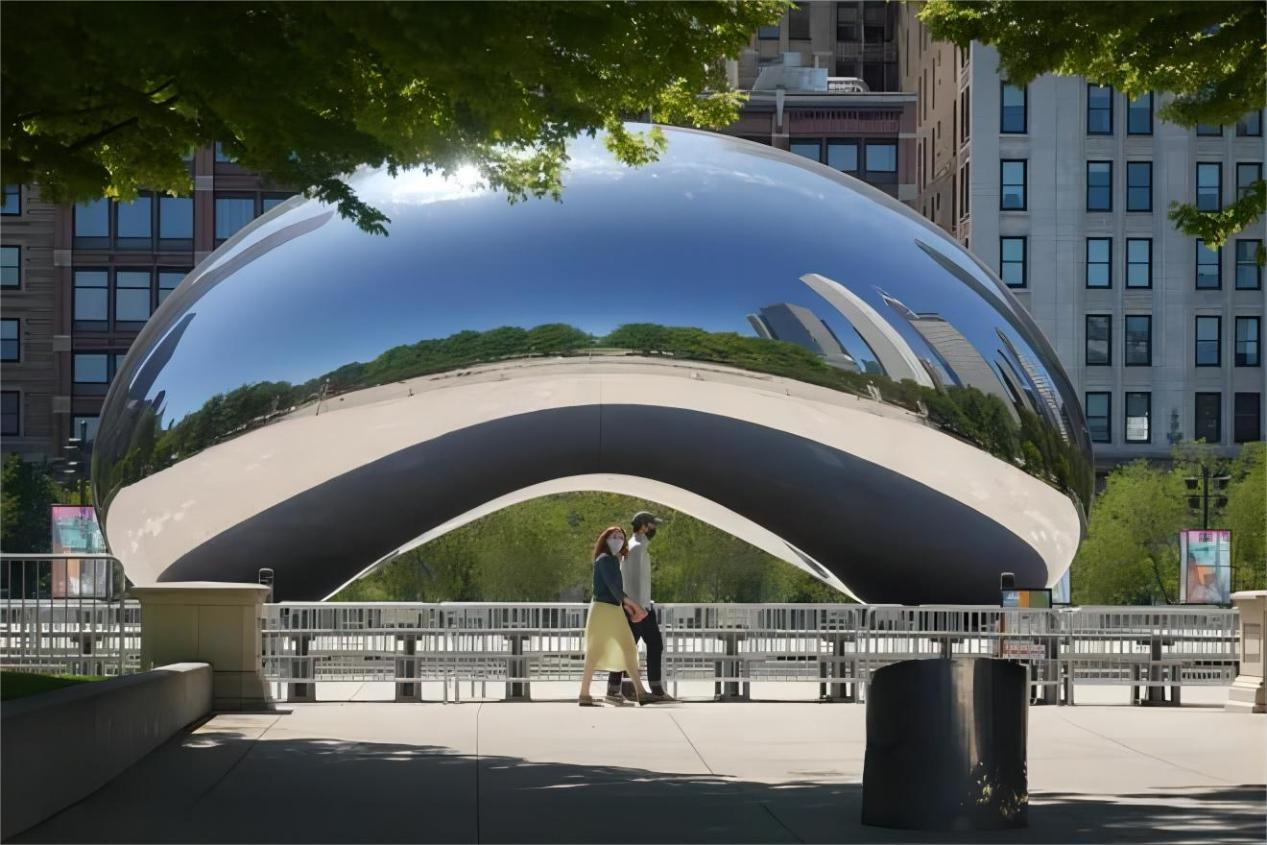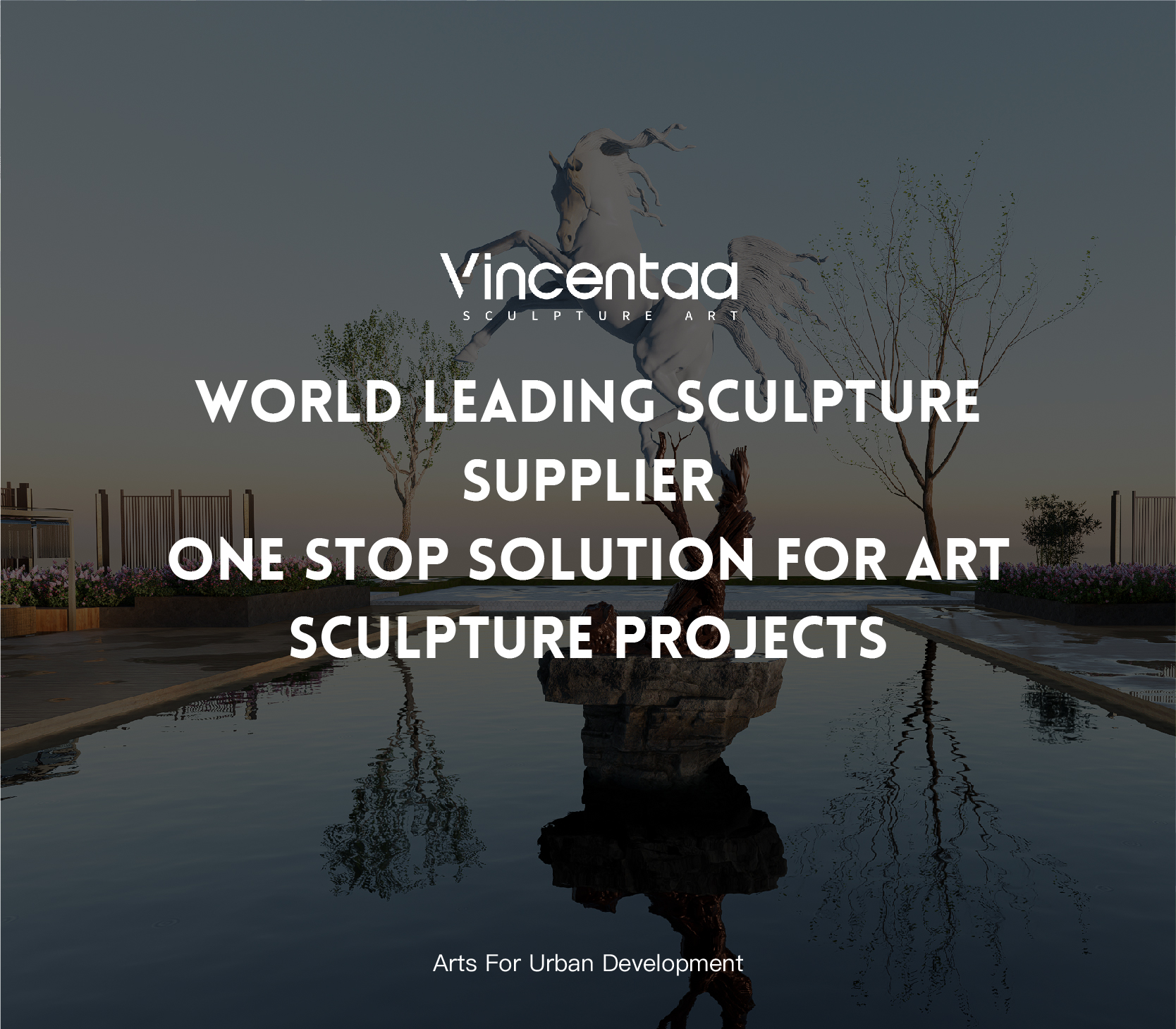Sculpture, as an art form, has a rich history and diverse styles. It is also a widely used medium for decoration, commemoration, and expression of artistic concepts. Artists can choose materials suitable for their themes and expressive techniques. The choice of materials for sculpture depends on the preferences of the artist and designer, the budget of the project, the location of the sculpture, and the required durability.
Materials Sculpture materials are varied, including stainless steel, bronze, fiberglass, acrylic, resin, stone, etc. Stainless steel is highly esteemed as a modern sculpture material due to its corrosion resistance and high strength, making it particularly suitable for outdoor sculptures. Its smooth surface and modern feel allow artists to create abstract, dynamic works, adding a unique artistic atmosphere to urban landscapes. At the same time, the durability of stainless steel ensures that sculptures maintain their original appearance for a long time, making them ideal decorations for public spaces. The forging process plays a crucial role in shaping these sculptures, as it gives stainless steel astonishing forms and ensures its ability to withstand the elements outdoors, maintaining a long-lasting exquisite appearance.
As a sculpture supplier, Vincentaa provides artists with a wide range of creative choices with its unique materials and professional services. They are committed to creating stunning visual artworks guided by forging techniques. Vincentaa’s products are not only aesthetically unique but also excel in quality and durability, allowing artworks to showcase their intricacies for a lasting period.



What preparations are required before making a sculpture?
Preparation work:
Preparation: Before starting the template tracing process, it is essential to prepare tracing paper and the model. Tracing paper is a special type of paper. Craftsmen at Vincentaa use it by placing it on the surface of the model and using specific tools such as pencils or scrapers to record the shape and details of the model’s surface.
Tracing Process:
Place the tracing paper on the surface of the model, ensuring it adheres completely, and gently move the tools over the model’s surface to leave the outline and details of the model on the tracing paper. This process requires careful attention to ensure that the traced result accurately reflects the shape of the model.

Block Design:
Through tracing, the various parts and details of the model can be clearly seen. Based on the shape of the model, a block design scheme is devised to divide the model into appropriate block-shaped areas. This aids in the forging process, allowing each block to be independently produced and eventually assembled into a complete model.

Numbering and Annotation:
Each block is numbered to facilitate easy identification and assembly during subsequent processing and forging stages. Numbers, letters, or other symbols can be used for numbering, ensuring each block has a unique identifier.
Crafting Plan Development:
After completing template tracing and block design, a detailed crafting plan is formulated. This includes selecting appropriate stainless steel materials, determining processing techniques, and establishing forging sequences to ensure the final product’s quality and precision.
Vincentaa’s craftsmen, through the aforementioned steps, provide a blueprint for creating the model, making subsequent stainless steel processing and forging work more organized and efficient.

Layout and Cutting:
Layout and Cutting is an important process in the creation of the model, ensuring that each template is properly arranged, numbered, and cut accurately using plasma technology.
Layout Design:
Firstly, based on the results of the previous template tracing, all segmented templates undergo a rational layout design. This involves determining the relative positions of each block to minimize waste and ensure a compact and orderly overall layout.
Preparation of Plasma Cutting Equipment: Ensure the plasma cutting equipment is in good condition. Plasma cutting is a high-temperature cutting technology that uses ionized gas to generate high-temperature plasma for precise material cutting. The equipment needs to adjust cutting parameters such as cutting speed and power to adapt to the characteristics of materials like stainless steel.
Cutting Process:
Place the laid out templates on the plasma cutting worktable and proceed with cutting according to the designed layout plan. Plasma cutting technology efficiently cuts complex-shaped plates, ensuring smooth cutting edges, minimizing heat-affected zones, and maintaining cutting accuracy.
Quality Inspection and Sorting: After each block is cut, conduct quality inspection to ensure cutting quality meets requirements. Check for smoothness of edges, accuracy of dimensions, and any issues like cracks. Subsequently, organize the cut plates in preparation for the next manufacturing phase.
Through the above steps, after layout and cutting, each block has undergone precise cutting, providing high-quality raw materials for the subsequent model manufacturing work.
What are the requirements for manual forging of stainless steel sculptures

Forging:
Manual forging is a manual process in model manufacturing that requires forging each small piece and continuously comparing it with the model during the forging process to ensure that the shape of each small piece is completely consistent with the model.

Small Block Forging:
Firstly, place the small block templates that have been through layout and cutting on the forging worktable. Craftsmen use forging tools such as hammers and molds to forge each small block. While forging, craftsmen constantly compare the shape of the small block to that of the model, adjusting the force and direction of the forging to gradually match the shape of the small block to the model.


Model Comparison:
During the forging process, craftsmen need to continuously compare the small blocks with the model. This can be done by placing the small blocks on the model or using measuring tools to check the shape and size of the small blocks, ensuring they match the design of the model.
Pairwise Assembly:
Once all small blocks have been forged and their shapes confirmed to be accurate through model comparison, the process of pairwise assembly begins. This requires precise arrangement and adjustment to ensure that the seams between each small block are in the correct positions.
Welding requirements for stainless steel sculptures
Welding:


Weld Seam Treatment:
After the small blocks are assembled, they are welded together to secure them in place. The weld seams need to undergo meticulous treatment to ensure they are smooth and strong. In this step, craftsmen may use welding tools and techniques to ensure the quality of the weld joints.

Forging Seam:
Further forging of the overall structure, especially near the welded seams. This helps to eliminate any unevenness caused by welding, making the overall structure more uniform and consistent.

Polishing:
The overall structure is polished to make the surface smoother. This helps to eliminate any marks left during the forging and welding processes, while also improving the overall appearance quality.
Through the aforementioned steps, combining processes such as manual forging, model comparison, assembly, welding, and polishing, a cohesive structure can be manufactured. Its surface, when touched by hand, makes it difficult to detect the presence of seams, achieving a high-quality hand-forged effect.
Do you want to know what the interior of the sculpture looks like?

Skeleton Structure
The skeleton structure is crucial in sculpture making, providing essential support and stability.
Design of Skeleton Structure for Small Sculptures:
For small sculptures that do not require additional support, a specially designed skeleton may not be necessary. The skeleton for small sculptures only needs to be sufficiently sturdy, employing a simple yet robust support structure.
Large Sculptures or Unique Shapes:
For sculptures exceeding five meters or having unique shapes, load calculations are necessary. Detailed calculations of weight, structure, and shape are performed to ensure the skeleton is sufficiently strong and stable.
Load Calculation Table:
For large sculptures or those requiring special support, a load calculation table needs to be prepared. This table includes detailed calculations, analyses, and explanations by structural engineers to ensure the rationality and stability of the skeleton structure.
Individual Design of Internal Skeleton:
For sculptures requiring load calculations, a separate internal skeleton design is necessary. Professional structural designers design the internal skeleton based on calculation results to provide maximum support and ensure the sculpture’s stability.
Stability Assurance:
The design of the internal skeleton aims to withstand the weight of the sculpture and external influences such as wind and earthquakes. Careful consideration is given to materials, connection methods, and structural design to meet stability requirements.
Through these steps, the design and calculation of the skeleton structure ensure that the sculpture remains stable under various circumstances while meeting aesthetic and safety standards.
Do you know what process steps are involved in the surface treatment of sculptures?
Surface treatment, polishing and buffing:

Surface treatment and polishing are crucial steps in sculpture making, which can make the sculpture surface smooth and shiny. Mirror polishing process:
Flat polishing: Firstly, perform flat polishing to deal with small irregularities on the surface and ensure overall smoothness.
Sandpaper polishing:
Use sandpaper with various grit sizes for step-by-step polishing, including 660, 80, 120, 240, 320, 600, 800 grit sandpaper. This step gradually removes surface scratches, making the surface smoother.
Surface polishing process:
Red wax polishing:
Apply red wax for surface polishing. Red wax helps to improve the glossiness and smoothness of the surface, laying the foundation for subsequent polishing steps.
Green wax polishing: Use green wax for polishing to increase the brightness and glossiness of the sculpture surface. This step helps to make the sculpture surface brighter, with a good visual effect.

Water Polishing Steps:
Water polishing: Lastly, the water polishing method is employed. Water polishing can remove fine traces on the surface, further enhancing the texture and overall quality of the sculpture surface. Water polishing can make the surface more uniform and achieve higher levels of smoothness.
Through the aforementioned steps, the surface treatment of the sculpture undergoes multiple processes, from flat polishing to step-by-step sandpaper polishing, followed by red wax, green wax, and water polishing, ultimately achieving a mirror polishing effect. This series of steps ensures the high-quality texture and glossiness of the sculpture surface.
What does a stainless steel mirror sculpture look like?

Mirror finish
In the process of creating stainless steel mirror sculptures, from the initial conception to the final presentation, it is not only a test of craftsmanship but also an unremitting exploration of artistic creativity. As a supplier with over a decade of experience in sculpture craftsmanship, Vincentaa takes pride in our highly skilled team of craftsmen, rigorously controlling every aspect to ensure that each product meets the highest standards of excellence.
We understand deeply that behind every stainless steel mirror sculpture lies the unique inspiration and creativity of the artist. Therefore, we are not just manufacturers but also collaborators in art. Through relentless effort and a pursuit of perfection in detail, we are committed to providing artists with unique artistic insights and professional services.
Vincentaa is willing to work hand in hand with every partner to create more stunning stainless steel mirror sculpture masterpieces together. Let us leave our vibrant footprints in the halls of art, witnessing the perfect fusion of creativity and craftsmanship.









